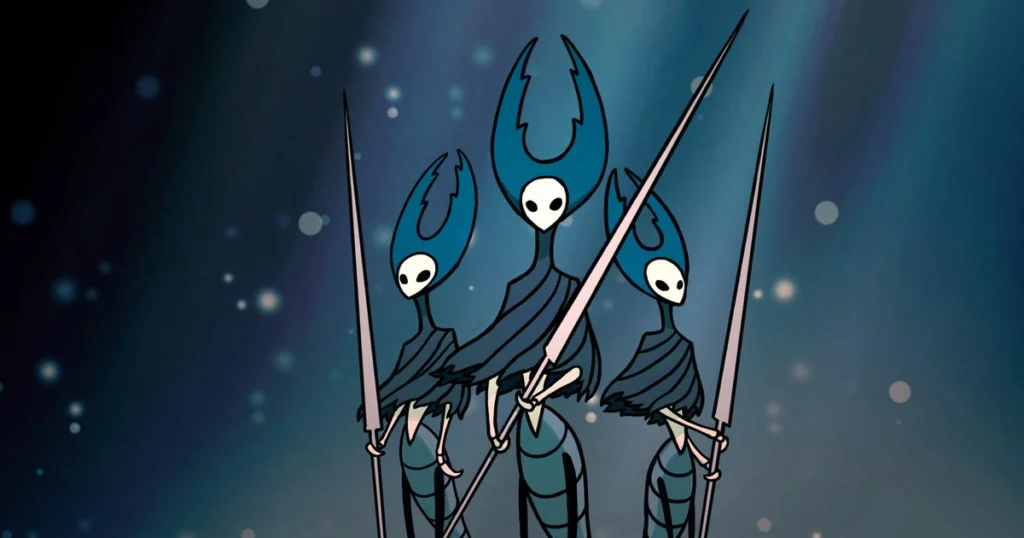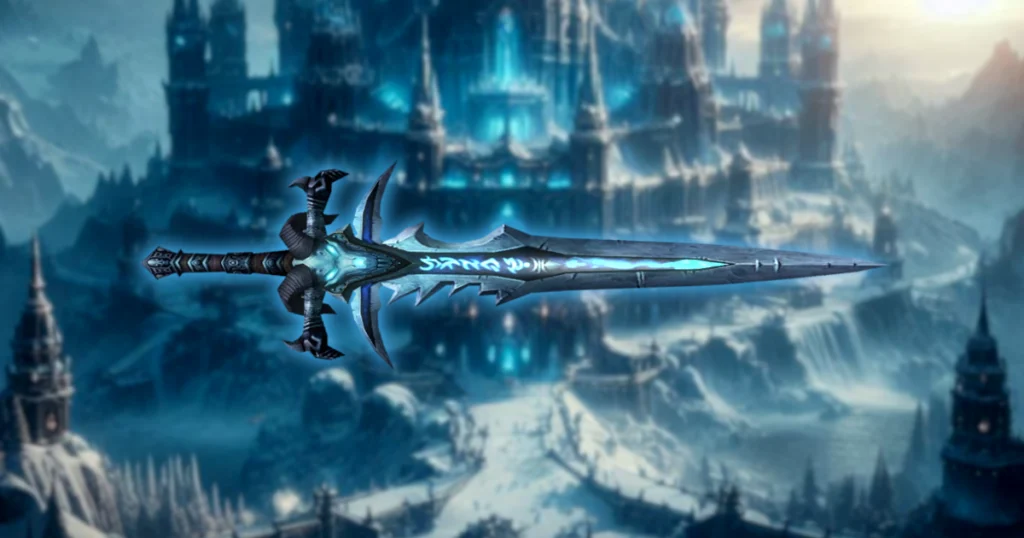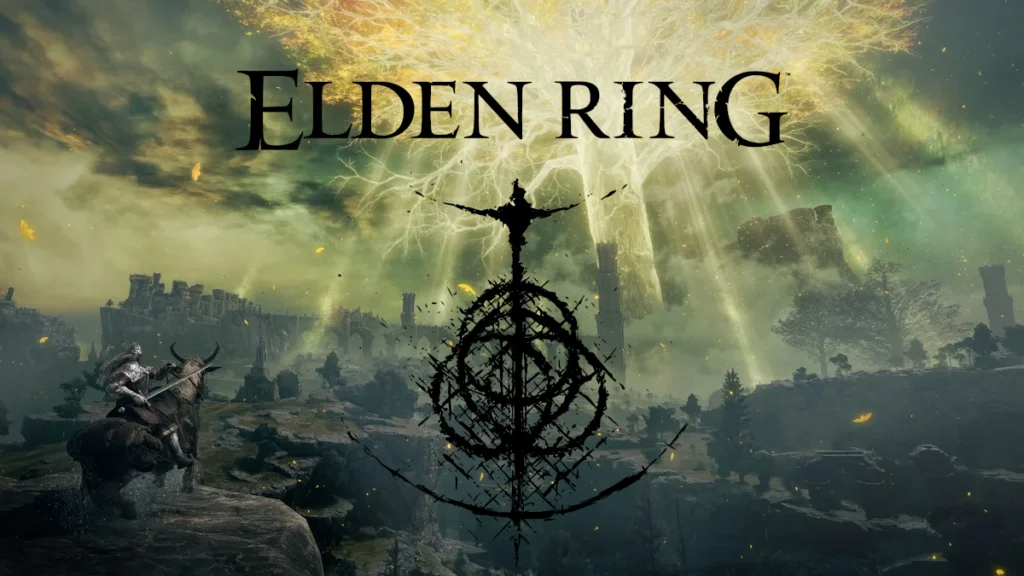
After the recent release of the Elden Ring DLC: Shadow of the Erdtree, we had the opportunity to learn more about the lore of Miquella, The Unalloyed (and many other titles!). While we already knew a good deal about him, Shadow of the Erdtree has revealed his true intentions as well as some secrets behind major events in the lore of other Demigods inhabiting the Lands Between.
Now, with all the information at hand, the wait is over for me to talk to you about one of the most powerful and frightening entities in the entire lore of Elden Ring.
Join me in this article as we discuss Miquella’s origins, his quest to find a cure for himself and his sister Malenia, the creation of the Haligtree, and his journey towards full godhood.
Grab something to drink, get comfortable, and enjoy the lore of Miquella of the Haligtree!
Miquella’s Origins: Empyrean and Afflicted
Miquella and Malenia are both the children of a single god. As such they are both Empyreans, but suffered afflictions from birth.
One was cursed with eternal childhood, and the other harbored rot within.-Remembrance of the Rot Goddess
Miquella is the child of Marika the Eternal and Radagon of the Golden Order. He is also Malenia’s twin, and the two share some common characteristics. On one hand, they are both Empyreans—individuals chosen as candidates to replace Marika as a new god—but on the other, they are also afflicted. Miquella is bound to stay eternally young, while Malenia harbors the Scarlet Rot within her.
The reason for this, as explained in the Remembrance of the Rot Goddess, is due to being born from a single god. But wait, didn’t I say that Miquella and Malenia were born of the union of Marika and Radagon? That is not a “single god”! Well, Marika and Radagon are just two different sides of the same entity. For more information about this convoluted part of the lore of Elden Ring, you may refer to this article about Radagon.
Even though afflicted, Miquella and Malenia possessed incredible powers, even compared to other demigods, as hinted by Morgott, the Omen King:
The twin prodigies, Miquella and Malenia.
Malenia was incredibly strong and unmatched in combat. Miquella, on the other hand, had another power of a much more dangerous kind: he could force people to love him.
The Empyrean Miquella is loved by many people. Indeed, he has learned very well how to compel such affection.
I don’t know about you, but that sends shivers down my spine. We best keep Miquella’s power in mind because it will be very important later in his lore, especially for the sake of the DLC.
Miquella’s Life in the Golden Order: Trying to Find a Cure

In an attempt to cure himself and his sister Malenia, Miquella joined the Golden Order Fundamentalism, following in his father Radagon’s footsteps. During this period, Miquella learned everything the Golden Order could offer him and created some incantations of his own—like Discus of Light and Triple Rings of Light—which he gifted to his father Radagon.
The gifts were reciprocated, as Radagon created an incantation for Miquella—Radagon’s Rings of Light—whose description reveals that Miquella eventually left the Golden Order Fundamentalism:
One of the incantations of the Golden Order fundamentalists. A gift of gratitude to the young Miquella from his father, Radagon.
Produces a golden ring of light and fires it across a wide area. Charging enhances range.And yet, the young Miquella abandoned fundamentalism, for it could do nothing to treat Malenia’s accursed rot. This was the beginning of unalloyed gold.
It seems that Fundamentalism did not give Miquella the answers he was searching for. Unlike his father Radagon, he was not loyal to the Golden Order, so he left and started developing alternative methods to find a cure.
Leaving the Golden Order: Miquella’s Unalloyed Gold
If you know anything about Miquella’s lore, you have likely heard of the famous Unalloyed Gold. In the lore of Elden Ring, Unalloyed Gold is used to stop the influence of the Outer Gods. The Unalloyed Gold Needle provides some information about it:
A ritual implement crafted to ward away the meddling of outer gods, it is thought capable of forestalling the incurable rotting sickness.
While we should accept that Unalloyed Gold prevents the influence of the Outer Gods, I needed to understand the reason. If you read my article about Maliketh, the Black Blade, you know I can really get stuck on these odd questions.
First, what is Unalloyed Gold? It’s simply pure gold. Gold in this state is very soft, which is why objects made of gold are typically an alloy—a combination of two or more metals—such as gold and copper, silver, or similar metals. If pure gold has magical properties of its own in the world of Elden Ring, I couldn’t find any source proving this.
I think the meaning is more symbolic. The Golden Order is represented by—unsurprisingly—gold. However, I believe that Miquella sees the precepts of the Order as tainted or corrupted, already influenced by an Outer God: The Greater Will. Miquella’s way is instead pure, and through the use of Unalloyed Gold, his powers are strengthened and able to stop the Outer Gods.
We have proof that Unalloyed Gold works since Miquella used an Unalloyed Gold Needle to prevent the Scarlet Rot from spreading further through Malenia’s body. This was still not a cure, and it would not solve or forestall Miquella’s affliction, as it has nothing to do with Outer Gods.
Don’t worry, though, because Miquella already had a plan involving trees and blood to cure his eternal youth.
A Failed Erdtree: Miquella’s Haligtree
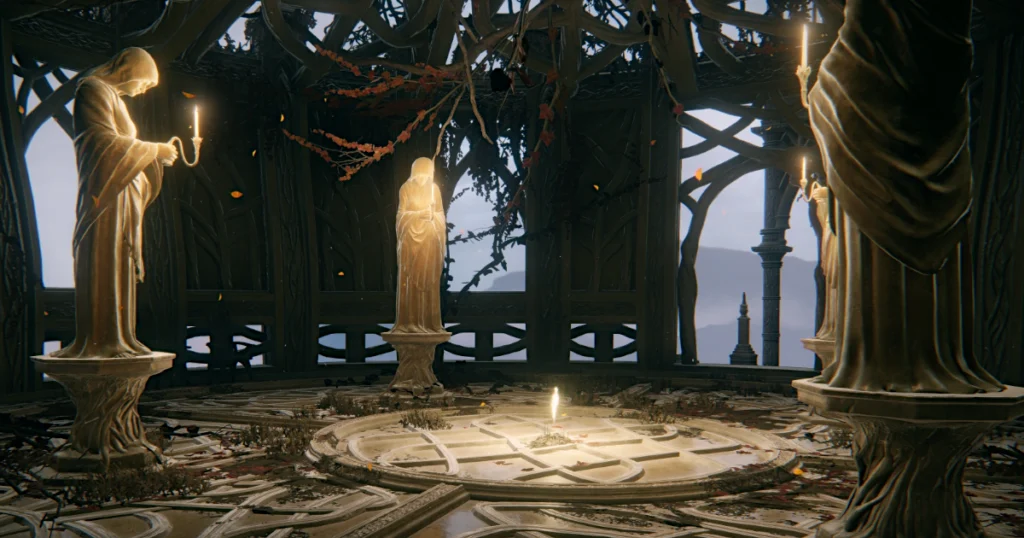
In an attempt to both cure his affliction and gain independence from the Greater Will, Miquella watered a sapling with his own blood, hoping for it to become another Erdtree. This sapling indeed became a great tree—called Haligtree—and gained a reputation as a safe haven for people rejected by the Golden Order precepts, like the Albinaurics and the Misbegotten.
Miquella then embedded himself in the Haligtree, becoming its core. However, something happened that prevented it from becoming an Erdtree, as explained by the Haligtree Knight Armor:
Though watered with Miquella’s own blood since it was a sapling, the Haligtree ultimately failed to grow into an Erdtree
Well, what happened is that his Omen stepbrother Mohg—also quite the weirdo—carved Miquella out of the Haligtree, put him in a cocoon, and bathed him in freshly harvested blood to ascend him to godhood and create a dynasty. I know that sounds extreme, but it is confirmed by the Lord of Blood’s Exultation:
Render up you offerings of blood to your Lord. Drench my consort’s chamber. Slake his cocoon’s thirst. His awakening shall herald the dawn of our dynasty
Removing Miquella from the Haligtree most likely warped it. The last nail in the coffin was Miquella’s sister, Malenia, who, while waiting for her brother to reappear, infected the Haligtree with the Scarlet Rot. But was Mohg acting of his own volition? Here, Miquella’s lore gets complicated.
The Vow: Miquella’s Plan for Godhood
DISCLAIMER: Keep in mind that Elden Ring is a FromSoftware game, and therefore, most often, we can’t always prove parts of the lore of the Lands Between. What I can do is share some of the most plausible theories, but ultimately, it is up to you, dear reader, to craft your own version of the facts.
In the Elden Ring DLC: Shadow of the Erdtree, we come to understand Miquella’s ultimate goal: to become a god and make the world a gentler place. The way to accomplish this is explained by the Secret Rite Scroll:
A scroll made of white tree bark.
Few can decipher the scroll, which describes the secret rite of the divine gateway said to be found at the tower enshrouded by shadow.
“A lord will usher in a god’s return,
and the lord’s soul will require a vessel.”
To become a god, an Empyrean needs a lord. The soul of a lord needs a vessel. Miquella needed a consort—a lord—but who could he choose?
- Godwyn’s soul was dead, so he could not be his consort.
- Morgott was too loyal to the Golden Order. Also an Omen.
- Mohg is strong, but a weirdo. Also influenced by an Outer God. Also an Omen.
- Rykard is another weirdo who meddles with giant snakes and gets eaten by one.
- Godrick is just weak.
- Malenia is an Empyrean, so not suited to be a lord. Also infected with Scarlet Rot and will eventually die.
- Ranni, another Empyrean, is a competitor, murderer of demigods and a punk.
- Radahn is…. wait. Radahn is actually a great candidate.
The Soul of a Lord: Radahn
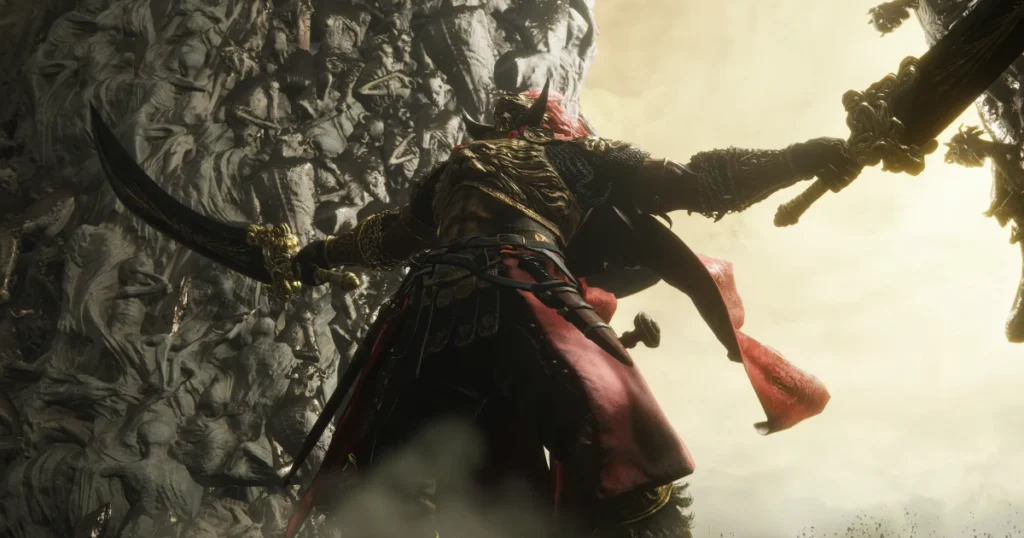
General Radahn is the strongest of the demigods and would perfectly suit the role of a god’s consort. Miquella, supported by Malenia, explains the plan to Radahn, asking him to be his future consort.
I’m going to become a god.
If we honour our part of the vow,
Promise me you’ll be my consort.I’ll make the world a gentler place.
We don’t know if Radahn accepted Miquella’s deal or not. In the Elden Ring community, some say that Radahn accepted the deal and followed Miquella willingly. He fights against Malenia for the sake of dying in battle, but instead, he gets infected with the Scarlet Rot and is eventually killed by the Tarnished in the deserts of a ruined Caelid.
Others say that he opposed the deal and that Malenia fought Radahn to kill him and deliver the General’s soul to Miquella in the Land of Shadow. As in the first theory, Malenia infects him, and he doesn’t die but is eventually killed by the Tarnished. In this version, Miquella would bewitch him into doing his bidding. Personally, I don’t fully support this theory due to a simple fact regarding Miquella’s Great Rune. You may want to read my article about the lore of Starscourge Radahn for more details.
Now that we understand Radahn was chosen as the Lord’s Soul, let’s talk about the Soul’s vessel.
The Soul’s Vessel: Mohg

As of now, we know that Mohg carved Miquella out of the Haligtree and brought him to Mohgwyn Palace. There, as written in the Remembrance of the Lord of Blood, Mohg tried to make Miquella a god, but received no response:
Wishing to raise Miquella to full godhood, Mohg wished to become his consort, taking the role of monarch.
But no matter how much of his bloody bedchamber he tried to share, he received no response from the young Empyrean.
Mohg did not know that he was only a pawn in Miquella’s game. In Shadow of the Erdtree, the Tarnished meets an NPC called Sir Ansbach. This individual served under Mohg and explains that, at a certain point, Mohg was bewitched by Miquella. Was he under Miquella’s spell before or after carving him out of the Haligtree? Again, we do not know. Most believe that it happened before that, and they might be right.
Ansbach tells the Tarnished that he raised his weapon against Miquella to free Mohg from his spell but ended up bewitched himself. It is true that this could have happened even when Miquella was already unresponsive in the cocoon, but I believe that the Miquella in the cocoon was only his body, which he shed to reach the Land of Shadow. This would explain why Miquella did not react to Mohg’s blood offerings.
The only thing that does not make sense with this version is that it makes the Haligtree kind of useless. Maybe the Haligtree was a particular way to shed his flesh, or maybe Miquella quickly understood that the Haligtree failed to become an Erdtree and bewitched Mohg while embedded in it.
Whatever the real reason was, the Tarnished eventually reached Mohgwyn Palace, challenged Mohg, Lord of Blood, and killed him. His body will be delivered to Miquella in the Land of Shadow, ready to be Radahn’s vessel.
Final Fight and the end of Madness in Miquella’s Lore
During Shadow of the Erdtree, we come to know that to ascend to godhood, Miquella had to leave everything behind: his flesh, his fears… even his love. We discover landmarks narrating this scattered throughout the Land of Shadow, called Miquella’s Crosses. We witness his plan almost reaching completion in Enir-Ilim, where Radahn is reborn into Promised Consort Radahn from Mohg’s body. The Tarnished will fight Radahn in his prime, using Mohg’s Bloodflame. After an initial clash, Miquella will join his stepbrother in the fight against us, changing Radahn’s name to Radahn, Consort of Miquella.
The change of name in the middle of the fight seems to be incredibly important because it symbolizes the marriage between them.
Ultimately, the Tarnished will defeat Radahn, Consort of Miquella, stopping Miquella’s dream of a gentler world and his ascension to godhood. The cutscene that follows reveals the vow already discussed before.
Conclusion
And here you have it: the lore of Miquella. This was quite a ride, and I hope you are still here with me, reading until the end. Miquella’s lore was the most complicated topic to write about so far, but he is surely one of the most interesting characters in the world of Elden Ring. Starting as an empyrean afflicted by eternal youth; failing cure after cure for himself and his sister; leaving everything behind to ascend to godhood, only to be defeated by the Tarnished.
There are other aspects that I should talk about regarding Miquella, like St. Trina, but I’d say this is enough for now! I really hope you enjoyed this article, and I’ll see you in the next one!
Have a wonderful day!
